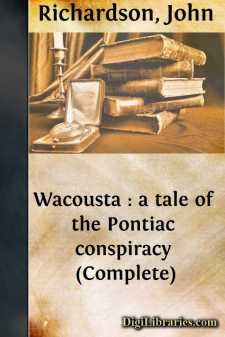Categories
- Antiques & Collectibles 13
- Architecture 36
- Art 48
- Bibles 22
- Biography & Autobiography 813
- Body, Mind & Spirit 142
- Business & Economics 28
- Children's Books 15
- Children's Fiction 12
- Computers 4
- Cooking 94
- Crafts & Hobbies 4
- Drama 346
- Education 46
- Family & Relationships 57
- Fiction 11828
- Games 19
- Gardening 17
- Health & Fitness 34
- History 1377
- House & Home 1
- Humor 147
- Juvenile Fiction 1873
- Juvenile Nonfiction 202
- Language Arts & Disciplines 88
- Law 16
- Literary Collections 686
- Literary Criticism 179
- Mathematics 13
- Medical 41
- Music 40
- Nature 179
- Non-Classifiable 1768
- Performing Arts 7
- Periodicals 1453
- Philosophy 64
- Photography 2
- Poetry 896
- Political Science 203
- Psychology 42
- Reference 154
- Religion 513
- Science 126
- Self-Help 84
- Social Science 81
- Sports & Recreation 34
- Study Aids 3
- Technology & Engineering 59
- Transportation 23
- Travel 463
- True Crime 29
Hardscrabble; or, the fall of Chicago. a tale of Indian warfare
by: John Richardson
Description:
Excerpt
CHAPTER I.
It was on a beautiful day in the early part of the month of April, 1812, that four persons were met in a rude farm-house, situated on the Southern Branch of the Chicago river, and about four miles distant from the fort of that name. They had just risen from their humble mid-day meal, and three of them were now lingering near the fire-place, filled with blazing logs, which, at that early season, diffused a warmth by no means disagreeable, and gave an air of cheerfulness to the interior of the smoke-discolored building.
He who appeared to be master of the establishment was a tall, good looking man of about forty-five, who had, evidently, been long a denizen of the forest, for his bronzed countenance bore traces of care and toil, while his rugged, yet well-formed hands conveyed the impression of the unceasing war he had waged against the gigantic trees of this Western land. He was habited in a hunting-frock of grey homespun, reaching about half way down to his knee, and trimmed with a full fringe of a somewhat darker hue. His trowsers were of the same material, and both were girt around his loins by a common belt of black leather, fastened by a plain white buckle, into which was thrust a sheath of black leather also, containing a large knife peculiar to the backwoodsmen of that day. His feet were encased in moccasins, and on his head, covered with strong dark hair, was carelessly donned a slouched hat of common black felt, with several plaited folds of the sweet grass, of the adjoining prairie for a band. He was seemingly a man of strong muscular power, while his stern dark eye denoted firmness and daring.
The elder of the two men, to whom this individual stood, evidently, in the character of a superior, was a short thick-set person of about fifty, with huge whiskers that, originally black, had been slightly grizzled by time. His eyebrows were bushy and overhanging, and almost concealed the small, and twinkling eyes, which it required the beholder to encounter more than once before he could decide their true color to be a dark gray. A blanket coat that had once been white, but which the action of some half dozen winters had changed into a dirty yellow, enveloped his rather full form, around which it was confined by a coarse worsted sash of mingled blue and red, thickly studded with minute white beads. His trowsers, with broad seams, after the fashion of the Indian legging, were of a dark crimson, approaching to a brick-dust color, and on his feet he wore the stiff shoe-pack, which, with the bonnet bleu on his grizzled head, and the other parts of his dress already described, attested him to be what he was—a French Canadian. Close at his heels, and moving as he moved, or squatted on his haunches, gazing into the face of his master when stationary, was a large dog of the mongrel breed peculiar to the country—evidently with wolf blood in his veins.
His companion was of a different style of figure and costume. He was a thin, weak-looking man, of middle height, with a complexion that denoted his Saxon origin....










